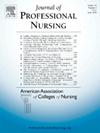比较中西部城市和农村大学医疗保健计划的边缘化观念
IF 2.9
3区 医学
Q1 NURSING
引用次数: 0
摘要
学校被认为是学术和社会准备的场所,但也是发现边缘化的地方。在保健工作者短缺成为全国关注的问题之际,边缘化影响了学业和工作表现以及归属感,影响了个人的成功和留任。有证据表明高等教育中的边缘化现象,尽管非常有限。目的本研究的目的是探讨农村和城市大学之间的边缘观念,在大学中的角色,以及卫生专业项目。方法采用横断面、描述性定量设计。调查被分发给来自一所农村和一所城市大学的卫生专业项目的教师、职员和学生。英格兰边缘化指数衡量的是卫生专业学生、教师和工作人员的边缘化程度。结果:城市大学的种族和民族多样性更高,边缘化得分也更高。此外,在统计上,城市大学的教师在权力分量表上的得分高于学生。在卫生专业项目之间没有发现显著差异。结论在本研究中,大学校园多样性的增加并不意味着边缘化观念的减少。额外的干预措施旨在消除障碍,缩小对边缘化个体的支持差距,这可能会提高整体归属感,并优化教师、学生和行政人员的成功。本文章由计算机程序翻译,如有差异,请以英文原文为准。
Comparing perceptions of marginality in urban and rural midwestern universities' healthcare programs
Background
Schools are expected to be sites for academic and social preparations, yet they are also a place where marginalization is found. Marginalization affects academic and work performance and sense of belongingness, impacting individual success and retention, in a time when the shortage of healthcare workers is a national concern. There is evidence, albeit very limited, on marginality in higher education.
Purpose
The purpose of the study was to explore perceptions of marginality between rural and urban universities, roles within the university, and health profession programs.
Method
A cross-sectional, descriptive quantitative design. Surveys were distributed to faculty, staff, and students in health professions programs from one rural and one urban university. The Englund Marginality Index measure marginality among health professional students, faculty, and staff.
Results
Greater racial and ethnic diversity at the urban university and also higher perceived marginalization scores. Also, faculty at the urban university had a statistically higher score in the Power subscale as compared to students. No significant differences were identified between health profession programs.
Conclusion
An increase in diversity on a college campus did not indicate a decrease in perceptions of marginalization in this study. Additional interventions aimed at removing barriers and narrowing gaps in support for marginalized individuals may improve the overall sense of belonging and optimize success of faculty, students, and administrative staff.
求助全文
通过发布文献求助,成功后即可免费获取论文全文。
去求助
来源期刊
CiteScore
4.80
自引率
8.00%
发文量
153
审稿时长
52 days
期刊介绍:
The Journal will accept articles that focus on baccalaureate and higher degree nursing education, educational research, policy related to education, and education and practice partnerships. Reports of original work, research, reviews, insightful descriptions, and policy papers focusing on baccalaureate and graduate nursing education will be published.

 求助内容:
求助内容: 应助结果提醒方式:
应助结果提醒方式:


